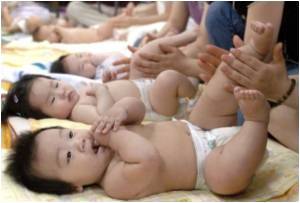India's homeless are being counted as part of the country's mammoth 10-yearly census in an exercise that could help shape future housing policy in the fast-growing economy.

Provisional data is expected to be published by the end of March with the full report on the demographics of the world's second-most populous nation due next year.
"It will bring the extent of the problem before the planning authorities and how it should be dealt with," Maju Varghese, from the YUVA Urban charity, told AFP in Mumbai.
But experts said gathering information on homeless people was notoriously difficult amid reports that some people were counted more than once while many others were missed.
"There are a lot of loopholes and shortcomings," said Shivani Chaudhry, from the Housing and Land Rights Network charity in New Delhi. "However it is a very good step forward that the homeless are being counted."
Varghese, whose organisation works with the urban poor, said the length of time taken for the survey -- overnight Monday-Tuesday -- was inadequate.
Advertisement
"People were left out and more time to engage with the homeless population would have helped."
A 2009 government report into urban poverty blamed the situation on a lack of adequate and affordable housing, leaving street sleepers vulnerable not just to the elements but violence, health problems and exploitation.
In New Delhi, for example, there were only 14 government-run night shelters with a capacity of just under 3,000 for a homeless population of more than 100,000, the UNDP-backed report said.
In Mumbai, an overcrowded city of 18 million people, land for new housing is at a premium, with demand pushing up rents to unaffordable levels for the low-paid and widening the gap between rich and poor.
The homeless population is expected to have increased since 2001, Chaudhry and Varghese said, with the figures in New Delhi and Mumbai likely to be at least 150,000 each, although the government disputes that estimate.
Veteran housing activist Indu Prakash Singh said he saw individuals sleeping on one street in the Nizamuddin area of New Delhi counted as a single unit.
"They were creating a joint family on the streets, which is not accurate. It's fudging reality. It's forging information," he said.
In addition, activists said no questions were asked about the income of the so-called "pavement dwellers", which could help determine social and affordable housing policy.
The term "homeless" was also too vague, Chaudhry said.
"The definition needs to be refined as it's not just people living in the open. You have boys working in restaurants and other industries who end up sleeping at work because they don't have homes."
Singh suggested there was a malaise in Indian society about tackling social inequality, criticising some enumerators for turning up late, clocking off early and not treating the impoverished interviewees with respect.
"There's a total lack of communication between the authorities and the people. They're not bothered about the poor. They think that having to go to them is a punishment," he said.
"The figures could be double what the census counted. It only makes an impact when you have the real picture and you have a scientific way of approaching the problem."
Source-AFP









